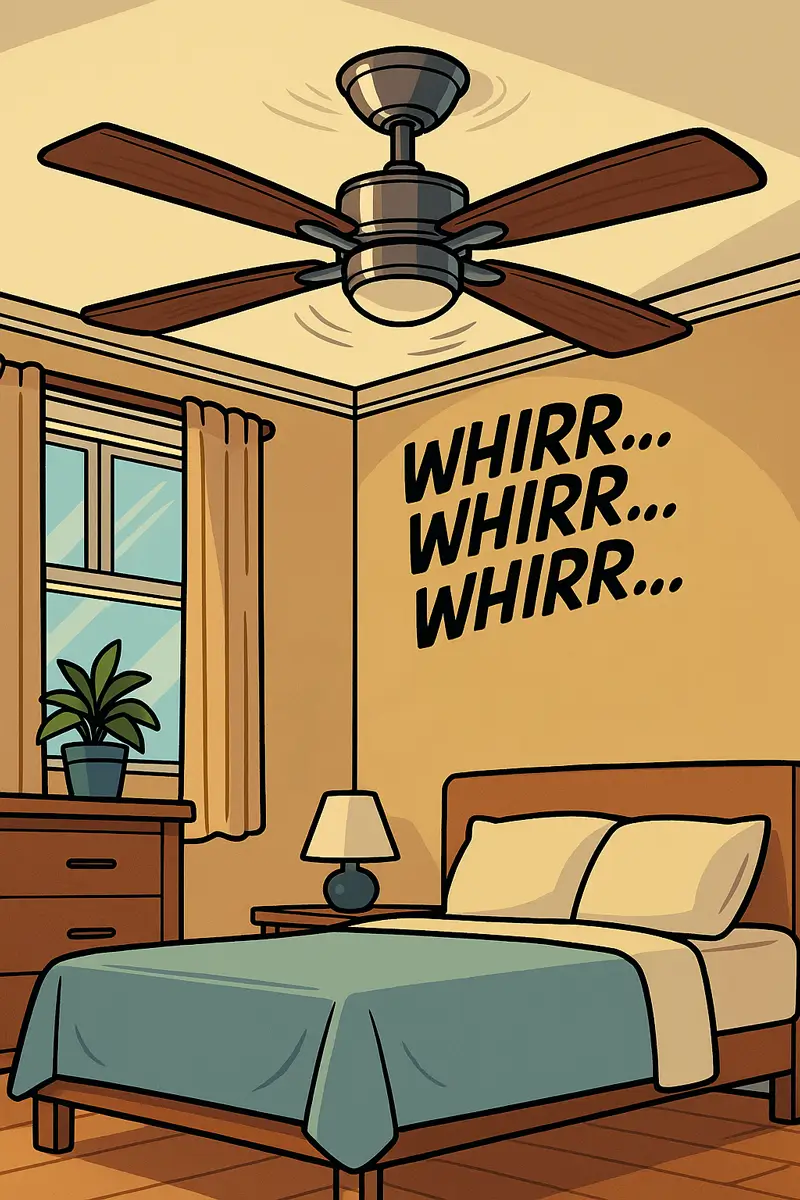
A misbehaving ceiling fan isn’t just annoying—it’s a clear sign something is wrong. Symptoms include noticeable wobbling or shaking of the fan body, a hum or click that grows louder at higher speed, and sluggish speeds or fan blades that barely move. In more serious cases, the fan will fail to start at all or will only run if you push it manually; this is a classic sign of a failing capacitor. Other clues include intermittent shutdowns when you change speed or use a remote, or a fan that only works on one speed. These issues can originate from loose mounting hardware, a bent blade bracket, damaged blades, worn bearings or motor bushings, or a burned‑out capacitor.
The Washington, DC metro area has a wide range of housing—from historic rowhouses with plaster ceilings to modern condos with drywall and concrete slabs. Many older homes still have standard light boxes in the ceiling rather than fan‑rated boxes and braces. If a ceiling fan is mounted on a box that isn’t designed to handle the weight and vibration of a fan, it can become unstable over time. The region’s hot, humid summers mean ceiling fans run for hours a day. Seasonal humidity causes wood to expand and contract; screws work loose and blades warp, which can lead to wobbling and noise. In some homes, DIY installations put fans on circuits that were already powering multiple appliances—overloading them and making the fan behave erratically. Capacitors wear out faster in our humid climate; when they do, the fan won’t start or will run at only one speed. Finally, many fans in our area are decades old; the older the fan, the more likely it is to develop balance and motor problems.
A wobbly fan isn’t just a nuisance; it can become a fall hazard. If it isn’t anchored to a ceiling joist with a fan‑rated box, vibrations can loosen the screws and cause the entire fixture to detach and fall, potentially causing injury or property damage. Improper wiring (loose wire nuts, back‑stabbed connections or overloaded circuits) can lead to short circuits, shocks and even electrical fires. When blades are unbalanced or misaligned, the motor works harder and can overheat, which shortens the fan’s life and can eventually burn out the motor. A failing capacitor can cause the motor to hum without turning the blades, which stresses the windings. All of these problems may void manufacturer warranties and violate electrical code if the fan isn’t installed with approved hardware and wire sizes.
If tightening screws and balancing kits don’t fix the wobble—or if the fan still hums, runs slowly, or refuses to start—call a professional. A licensed electrician will check whether the fan is mounted on a fan‑rated ceiling box and brace, and replace it if not. They’ll inspect wiring and connections to prevent shorts or fires. If the fan won’t start or has sluggish speeds, they can test the capacitor and replace it with the correct value, restoring proper speed control. They’ll also balance blades correctly and verify that the circuit isn’t overloaded. If the motor is burned out or the fan is outdated, they can recommend a safe replacement that meets current code and matches the room’s size. Investing in a professional ensures the fan is secure, quiet, and reliable for years to come.
A wobbling, noisy or sluggish fan is your home’s way of saying “help me!”—don’t ignore it. Loose boxes, miswired connections and bad capacitors are hidden dangers. A call to a licensed electrician can secure the mounting, replace worn parts and restore your fan to smooth, quiet operation. It’s the difference between living with an annoying rattle and enjoying gentle breezes with peace of mind.
Dr. Electric offers a range of services to enhance safety, reliability, and performance. Get in touch or check out our List of Common Electrical Requests.
You can also text our support team at 833-337-3532 or email: info@drelectric.com